Assessing the relationship between chromatin and splicing factors in alternative splicing
dc.contributor
Universitat Pompeu Fabra. Departament de Ciències Experimentals i de la Salut
dc.contributor.author
Kremsky, Isaac Jacob
dc.date.accessioned
2015-11-03T13:54:51Z
dc.date.available
2015-11-03T13:54:51Z
dc.date.issued
2015-07-14
dc.identifier.uri
http://hdl.handle.net/10803/316790
dc.description.abstract
Proteins that bind to DNA or RNA are both known to influence alternative splicing.
However, there has not been so far a systematic experimental exploration of the
relationship between these factors in their effect on splicing. In this thesis, we make use
of the large amounts of publicly available high throughput sequencing data that now
make it possible to explore this question on a genome-wide scale. We made exhaustive
use of a method known as profiling to address this question. As most profiling methods
in common use are merely qualitative, the first task of the thesis was to generate a
quantitative profiling method and bioinformatics tool, ProfileSeq, which we validated
by reproducing previous results from the literature. ProfileSeq and other methods were
combined to mine for relationships between DNA and RNA binding factors with
potential relevance to splicing. We found significant associations between the
transcription factor CTCF and the RNA binding protein LIN28A, and similarly between
SPI1 and RNA-binding proteins that bind to AC-rich motifs, such as hnRNPL. These
represent putative relationships relevant to splicing, as these results were reached by
more than one independent method with independent datasets. We also show evidence
that CTCF acts as a barrier between regions of H3K4me3 marking inside genes. A
number of other results of potential interest to both the bioinformatics and molecular
biology communities are also described
eng
dc.description.abstract
Las proteínas que se unen al DNA o al RNA pueden influir el splicing alternativo. Sin
embargo, no ha habido aún una exploración sistemática de la relación entre estos dos
tipos de factores en su acción sobre el splicing. En esta tesis hacemos uso de datos
públicos de secuenciación de alto rendimiento para explorar esta cuestión a escala de
todo el genoma. Hemos hecho un uso sistemático de la construcción de perfiles de
información genómica para abordar esta cuestión. Debido a que los métodos
i
comúnmente utilizados para construir perfiles hace sólo comparaciones cualitativas, la
primera tarea de esta tesis consistió en desarrollar un método para cuantificar perfiles e
implementarlo en una herramienta bioinformática, ProfileSeq, la cual hemos validado
mediante la reproducción de resultados previamente descritos en la literatura.
Posteriormente, ProfileSeq se usó con datos de actividad de unión al DNA o al RNA de
distintas proteínas para estudiar la relevancia en el splicing. Se encontraron varias
asociaciones significativas. Entre ellas, la del factor de transcripción CTCF y la proteína
de unión a RNA LIN28A. De manera similar, se encontró una relación entre SPI1 y
proteínas de unión a RNA que se unen a motivos ricos en AC, como hnRNPL. Estos
resultados representan relaciones putativas relevantes para el splicing, ya que se
alcanzaron por más de un método diferente y usando datos independientes, También
mostramos evidencia de que CTCF actúa como una barrera entre las regiones
intragénicas de marcaje diferencial con H3K4me3. También se describen otros
resultados de interés potencial tanto para la bioinformática como para la biología
molecular.
spa
dc.format.extent
84 p.
cat
dc.format.mimetype
application/pdf
dc.language.iso
eng
cat
dc.publisher
Universitat Pompeu Fabra
dc.rights.license
L'accés als continguts d'aquesta tesi queda condicionat a l'acceptació de les condicions d'ús establertes per la següent llicència Creative Commons: http://creativecommons.org/licenses/by-sa/3.0/es/
dc.rights.uri
http://creativecommons.org/licenses/by-sa/3.0/es/
*
dc.source
TDX (Tesis Doctorals en Xarxa)
dc.subject
Alternative splicing
cat
dc.subject
Chromatin
cat
dc.subject
Sequencing
cat
dc.subject
Motifs
cat
dc.subject
CTCF
cat
dc.subject
Empalmament alternatiu
cat
dc.subject
Cromatina
cat
dc.subject
Seqüenciació
cat
dc.subject
Motius
cat
dc.title
Assessing the relationship between chromatin and splicing factors in alternative splicing
cat
dc.type
info:eu-repo/semantics/doctoralThesis
dc.type
info:eu-repo/semantics/publishedVersion
dc.subject.udc
575
cat
dc.contributor.authoremail
isaac.kremsky@upf.edu
cat
dc.contributor.director
Eyras Jiménez, Eduardo
dc.embargo.terms
cap
cat
dc.rights.accessLevel
info:eu-repo/semantics/openAccess
dc.identifier.dl
B 26894-2015
cat
dc.description.degree
Programa de doctorat en Biomedicina


